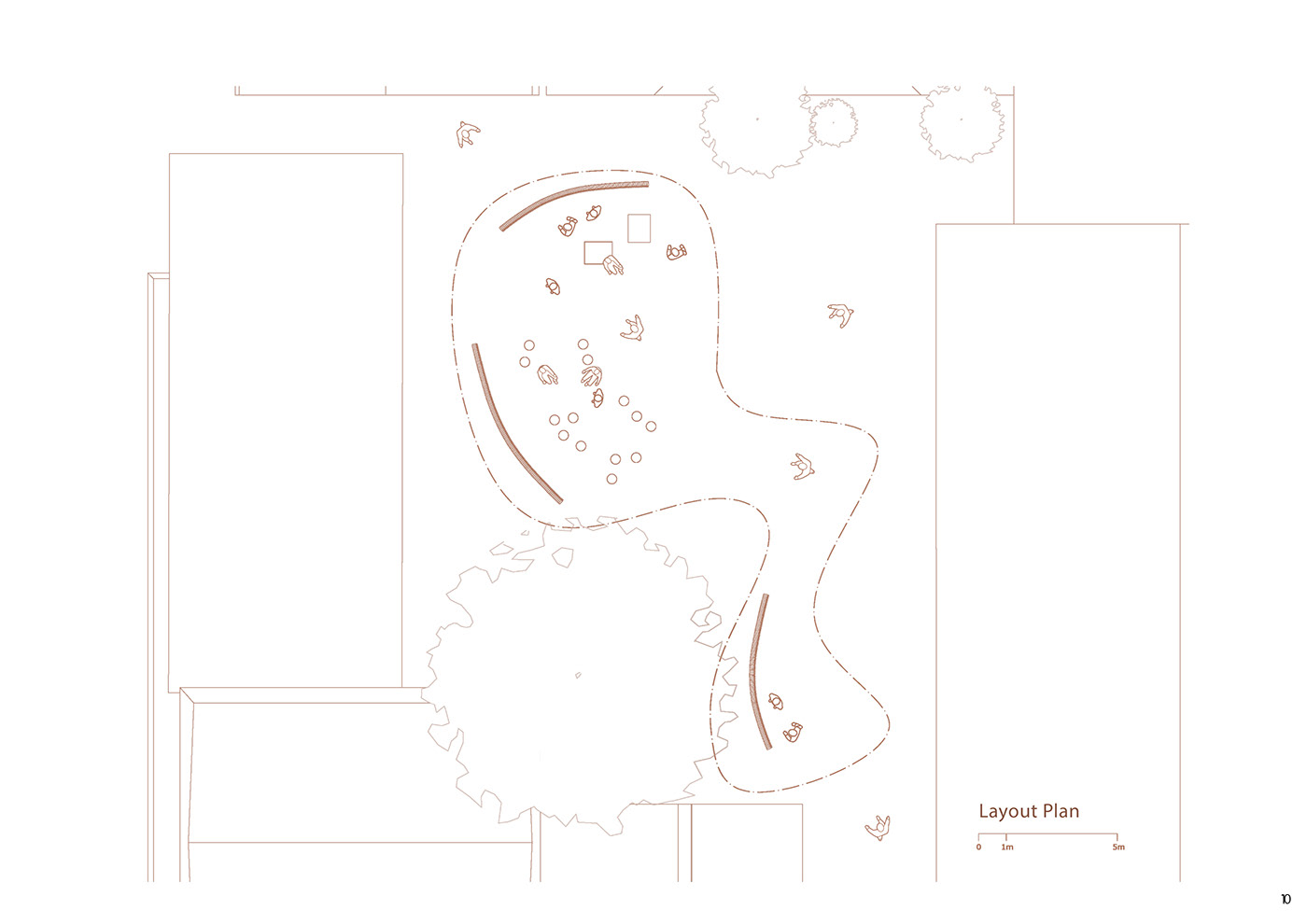














Clouds of Umbrellas, Waves of Plastic Wastes
Phnom Penh is a historic city rich in culture, tradition, civilization, art and architecture. As the city expands, development advances independently, often ignoring context, art, culture, as well as to design for community. The design project gave us the opportunity to propose a new design for the community on one of the heritage sites of Phnom Penh.
An architectural intervention in the heart of Phnom Penh that emphasizes principles of sustainability and contemporary design-thinking. The canopy, which is located in the Phsar Tmey neighbourhood, enhances and activates the atmosphere of the community area with a site-specific design that not only provides shade but also serves aesthetic purpose for the neighbourhood. While corresponding with the warehouse’s contemporary structure and architectural innovation, the canopy transforms the space with a contemporary structure that presents a distinctive contrast to colonial architecture. The canopy serves as a focal point of public interaction and engagement in addition to demonstrating a sustainable design in a public space. It provides an opportunity for a public programme of activities and events that emphasizes pertinent urbanization and sustainability concerns.
Design Narrative
Inspired by the context of the site, the project abstracts the concept from canopies of umbrellas that are found along the neighborhood, especially along Phsar Kandal market near the site and throughout Cambodia, where umbrellas overlap in a way that connects and creates unity of space. The design is showcased as if the canopy evolved naturally from the surroundings, the rhythms of daily life, and flows right into the center of the community.
The proposed design incorporates sustainability through the selection of materials, Cambodian handcrafted flat bamboo baskets (ចង្អ អរ). “Clouds of Umbrellas, Waves of Plastic Wastes” tell a story of Cambodian culture, craft, art and way of living in celebration of sustainable traditional products through design and architecture intervention. Additionally, the project shows the unity of Cambodians and Cambodian craftsmanship collaborating hand in hand, it creates a narrative of constant support to local artisans by introducing and promoting it to new generations, and inspiring them for the future preservation. For Cambodians, by Cambodians. Furthermore, the Canopy displays a statement of the extreme use in plastic waste in Cambodia through the waves of plastic bottle partitions. This thoughtful process of the Canopy design expresses that architecture holds the power to surprise, unite and inspire all while meditating important aspects such as community, preserving and sustainability.
The design aims to reconnect the canopy and the neighborhood. With consideration of site context including available space, preferred entrance, existing stepped seating as well as functions within F3, the shape of the design is a thoughtfully crafted result of the imagined circulation as well as spatial organization under the canopy.
In addition to that, the canopy was designed in a way that each material could be easily constructed by non-skilled workers. This means that the widely available resource in the construction phase allows work opportunities for anyone, from anywhere.
The project showcases Cambodian culture, craft, art, and way of life through traditional items that can benefit a variety of people, from farmers to families, from the countryside to the city. The concept aims to be sustainable for all communities, especially the vulnerable local artisans who are slowly being replaced by modern adaptive technologies like plastics. At the material sourcing phase, it provides more work opportunities for villagers; when the project is fully constructed, it provides a community friendly space for everyone and all activities; and finally, the project’s afterlife is concluded with the donation of each basket to all groups of people in need, from farmers to local housewives and even to the neighborhood vendors at the market.
In Phnom Penh alone, around 10 million plastic bags are used on a daily basis (UNDP, 2019). “The Waves of Plastic Wastes” was designed to be a sculptural expression of a global problem. Upon entry to the canopy, visitors are to be greeted by enormous waves of plastic bottles, representing the amount of plastic bags that the Phnom Penh population uses in a day. Using a total of 5000 bottles, each bottle represents 2000 pieces of plastic waste, to design the recycled water bottles partitions. The design conveys the message that each bottle is small but once all are combined, the impact says otherwise. At the same time, despite being an art installation that tells the story and raises awareness of plastic wastes, plastic bottle partitions also were designed to be movable and flexible, to be used for various occasions and scenarios.






